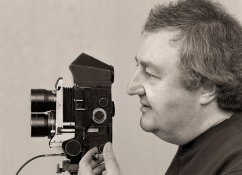Roger Cole
Member
Tlrs are pretty fun to use. Most people that see them get a real kick out of it, and are usually awed by the focusing screen. someone had called it live view once hehe. There's a learning curve for sure, especially framing moving subjects. I think you should try an inexpensive model out before plunking down a good amount and end up not liking it.
I encountered at least one person that was rather incredulous that the ground glass view didn't involve a battery and electronics.
Oddly, one person who was put off in frustration by the right/left reversed view had no problems with the inverted view on the ground glass of the 4x5 and loved the big camera. I suppose being reversed is ok as long as it's also inverted, making it still correct in a sense.




